

— Blogs —
—Products—
 Consumer hotline +8618073152920
Consumer hotline +8618073152920 WhatsApp:+8615367865107
Address:Room 102, District D, Houhu Industrial Park, Yuelu District, Changsha City, Hunan Province, China
Product knowledge
Time:2024-02-29 20:29:31 Popularity:1642
A pyranometer is an instrument used to measure the solar irradiance (sunlight) reaching a surface. It is designed to detect the total solar energy, including both direct and diffuse sunlight, that is incident on the Earth's atmosphere or on a specific area of interest, such as a solar panel or a surface of a plant canopy.
The term "pyranometer" comes from the Greek words "pyr," meaning fire, and "nometer," meaning measurer. This is because the first solar radiation sensors were developed to measure the heating power of sunlight.
Pyranometers operate on the principle of thermal measurement. They typically consist of a blackened surface, which absorbs the incoming sunlight and heats up. This temperature increase is then converted into a measurement of solar irradiance through various physical processes, often using a thermopile sensor. A thermopile is a series of thermocouples that convert the temperature difference between the black surface and a reference surface (which is usually white to minimize absorption of solar radiation) into an electrical voltage.
This voltage is proportional to the solar irradiance, and it can be measured and recorded to determine the amount of solar energy being received. Pyranometers are often used in solar energy research, climate studies, agriculture, and the optimization of solar power systems.
Pyranometers come in different types, including global pyranometers, which measure both direct and diffuse radiation, and beam pyranometers, which measure only the direct solar beam.
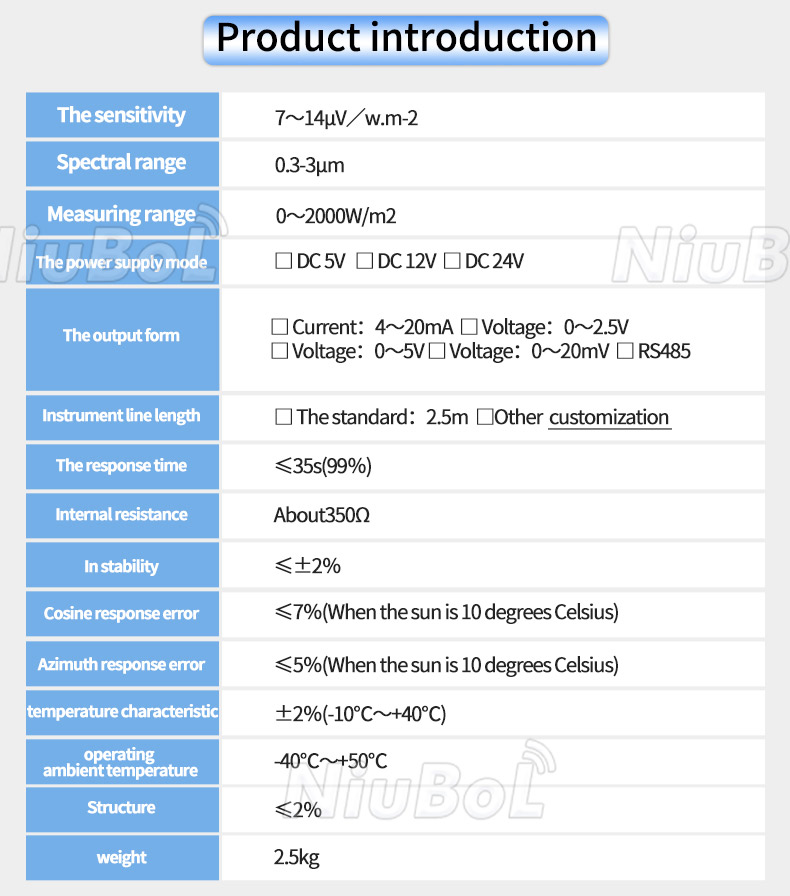
1. Solar Energy Research and Development: Pyranometers are used to measure the incident solar irradiance on solar panels, which helps in the design and optimization of solar power systems. This data is crucial for determining the efficiency of solar cells and the potential energy output of solar installations.
2. Agriculture: In farming, pyranometers can be used to assess the amount of solar radiation that reaches crop canopies, which affects photosynthesis and plant growth. This information helps in planning crop types and irrigation strategies.
3. Climate Studies: Pyranometers contribute to understanding Earth's energy balance by measuring the incoming solar radiation, which is essential for climate modeling and predicting future climate changes.
4. Atmospheric Research: By monitoring solar radiation, pyranometers assist in studying atmospheric conditions, such as cloud cover and air pollution, which can affect solar energy reaching the Earth's surface.
5. Weather Forecasting: Measurements from pyranometers can be used in weather forecasting models to predict solar irradiance levels, which is important for outdoor activities and energy planning.
6. Building Energy Management: In the context of smart buildings, pyranometers help in optimizing building energy consumption by providing data on solar radiation levels, which can influence decisions about window placement, shading, and HVAC systems.
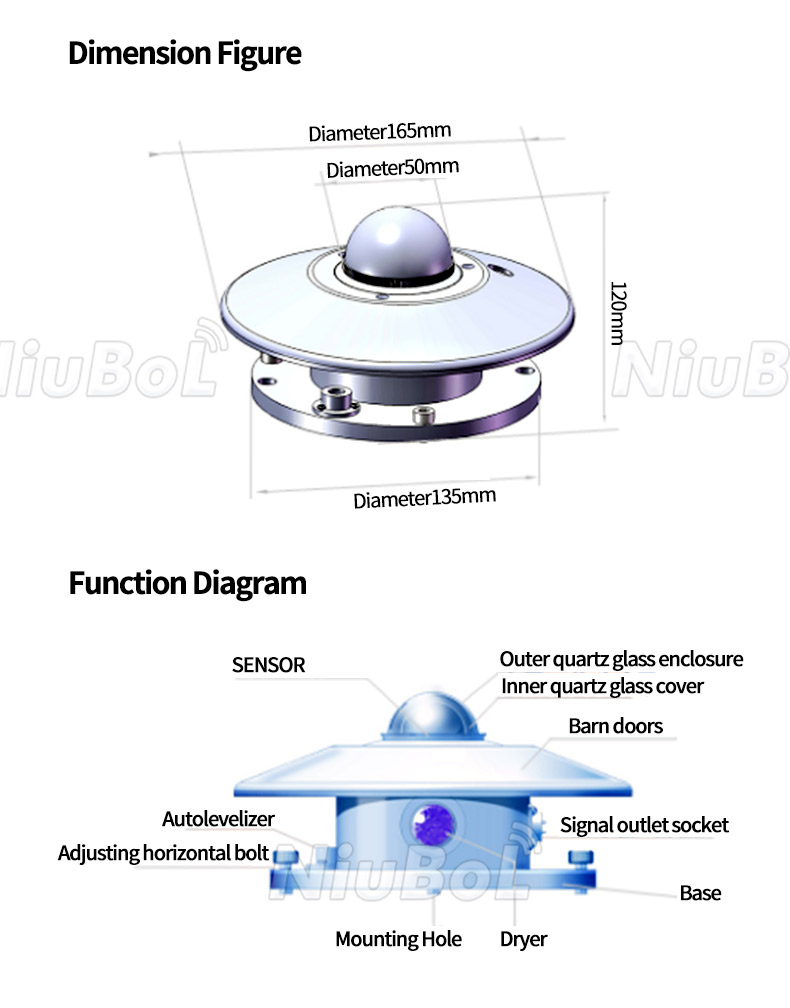
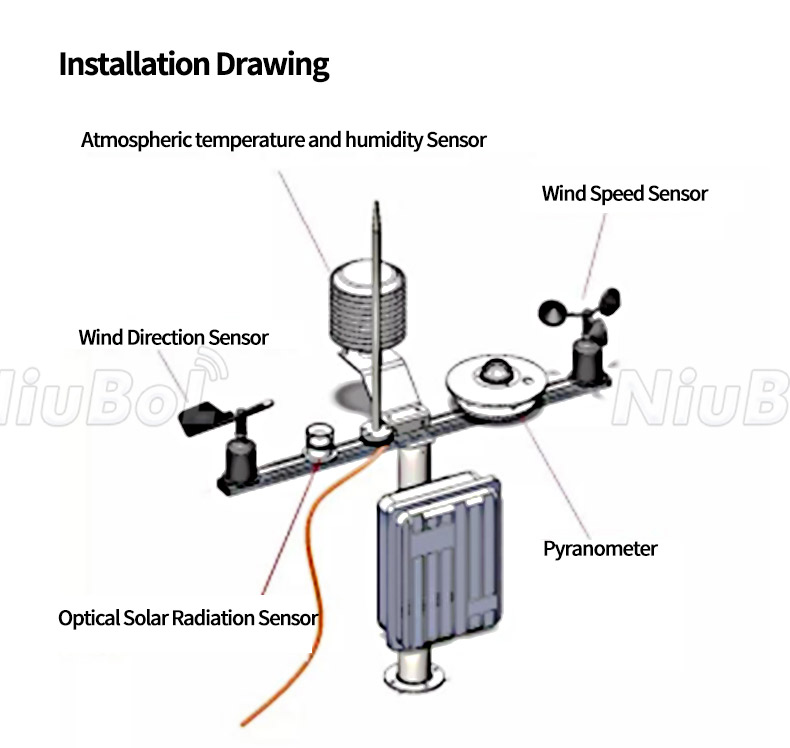
7. Environmental Monitoring: Pyranometers are useful in monitoring the impact of solar radiation on the environment, including the effects on ecosystems and biodiversity.
8. Photovoltaic System Sizing and Placement: For installing photovoltaic (PV) systems, pyranometer data is used to size the system correctly and to determine the best placement to maximize solar energy capture.
9. Education and Demonstration: Educational institutions and demonstration sites use pyranometers to teach about solar energy and to showcase the benefits of solar technology.
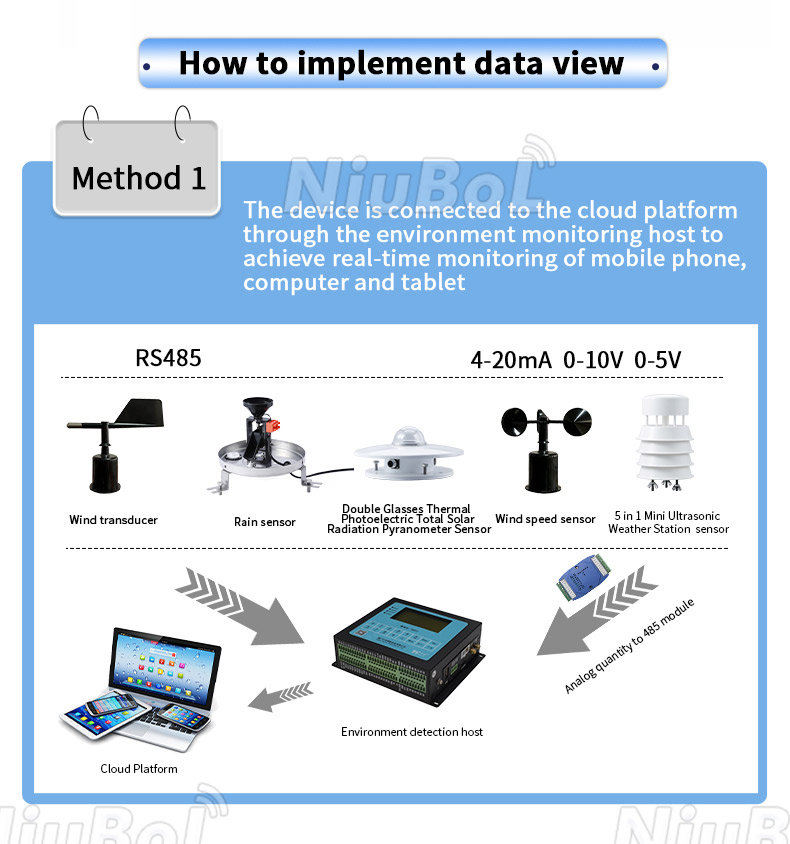
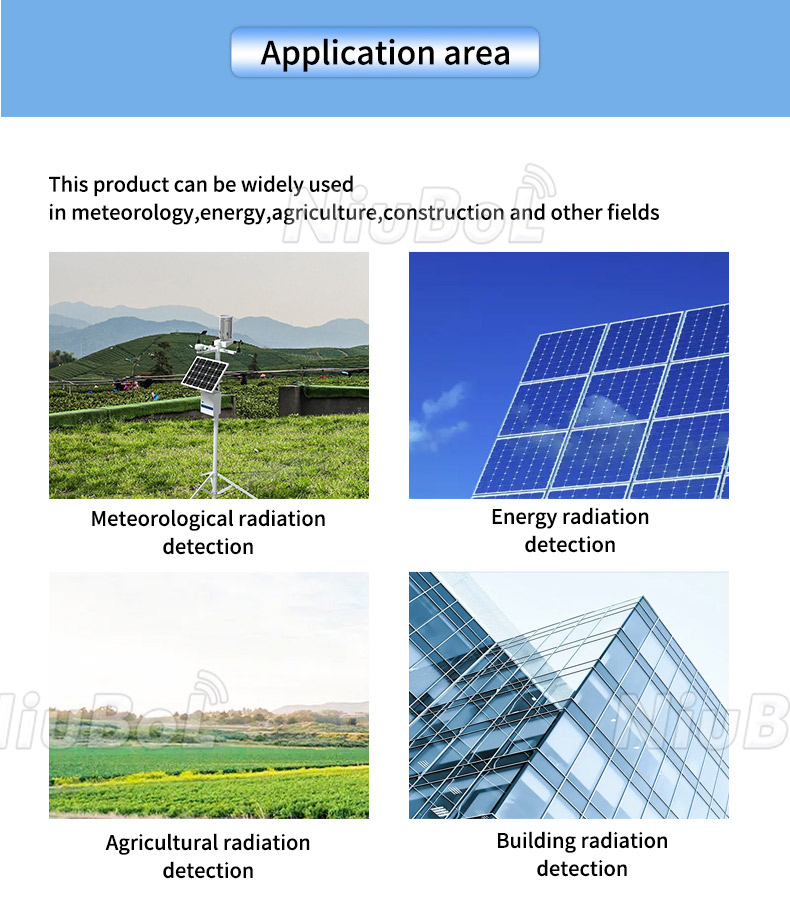
Pyranometers are essential tools for anyone involved in renewable energy, climate research, environmental monitoring, and urban planning, as they provide accurate and reliable measurements of solar radiation, which is critical for decision-making and project planning.
NBL-W-HPRS-Solar-Radiation-Sensor-Instruction-Manual-V3.0.pdf
NBL-W-SRS-Solar-radiation-sensor-instruction-manual-V4.0.pdf
Related recommendations
Sensors & Weather Stations Catalog
Agriculture Sensors and Weather Stations Catalog-NiuBoL.pdf
Weather Stations Catalog-NiuBoL.pdf
Related products
 Combined air temperature and relative humidity sensor
Combined air temperature and relative humidity sensor Soil Moisture Temperature sensor for irrigation
Soil Moisture Temperature sensor for irrigation Soil pH sensor RS485 soil Testing instrument soil ph meter for agriculture
Soil pH sensor RS485 soil Testing instrument soil ph meter for agriculture Wind Speed sensor Output Modbus/RS485/Analog/0-5V/4-20mA
Wind Speed sensor Output Modbus/RS485/Analog/0-5V/4-20mA Tipping bucket rain gauge for weather monitoring auto rainfall sensor RS485/Outdoor/stainless steel
Tipping bucket rain gauge for weather monitoring auto rainfall sensor RS485/Outdoor/stainless steel Pyranometer Solar Radiation Sensor 4-20mA/RS485
Pyranometer Solar Radiation Sensor 4-20mA/RS485
Screenshot, WhatsApp to identify the QR code
WhatsApp number:+8615367865107
(Click on WhatsApp to copy and add friends)
